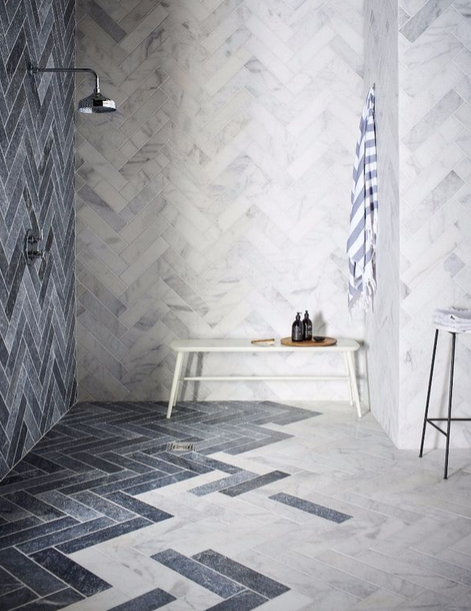We’ve said it before and we’ll say it again: Beware the Pinterest house. Mottling together a home chock-full of trends—be it anything from open shelving to popular metals—can be at the least disorienting and at the most a very expensive letdown. Even when the magazines and the internet are in a tizzy about something, telling everyone this faucet or this tile will be the next big thing, it’s good practice to put on the blinders and make sure the idea really works for you and your space. Don’t just take our word for it. Which trends are probably best avoided in a renovation? Heed the advice of five designers on which trends to leave pinned in “Dream Kitchen.”
Specialty Finishes on Hardware
Specialty finishes in the kitchen or bathroom can quickly date your space—and you might be stuck with them for longer than you’d like, since they can be expensive to install or have changed. “Remember rose gold? Brushed bronze?” asks Anishka Clarke, cofounder (along with her partner Niya Bascom) of interior design firm Ishka Designs. “Specialty finishes tend to be a thing of the moment, and the up-charges associated with them may not be worth it if you don’t absolutely love the look.”
Susana Simonpietri, Creative Director for design firm Chango & Co, agrees, advising clients against “face-planting” into the brass trend. “Brass has become very popular, and people are integrating it as the main finish in their bathrooms and kitchens,” she says. “While I think brass is timeless when used correctly in a powder room or moody master bathroom, I think we will be seeing a lot of brass faucets getting pulled out come 2020.”
Custom Cabinetry for Temporary Uses
Natalie Myers, the interior designer behind Los Angeles–based Veneer Designs, often steers her clients away from custom cabinetry that might not be relevant after a few years. Think: built-ins designed to house everything from a beloved espresso machine to office supplies.
How To Make Simple Dining Room Centerpieces
“I applaud the effort to stow away unsightly electronics, but to build a special cabinet for a printer’s exact dimensions seems regrettable,” she says, noting the ever-shrinking size of devices. “I fear clients being stuck with oversize cabinets for undersized or nonexistent future versions of their electronics.” Instead, she suggests investing in something like a rolling cart to stow in a closet. “It’s important to think about the longevity of your clever solution to a current problem,” she says.
Over-the-Top (or Unnecessary) Bathroom Additions
While it’s extremely popular to do gut renovations of bathrooms, several designers suggest seeing what you can salvage first. “I really love old bathrooms,” says Starrett Ringbom, the interior designer behind Starrett Hoyt. “There is a dignity and integrity to old prewar bathrooms—sturdy pedestal sinks and strong, old fittings marked ‘cold’ and ‘hot,’ tile that you can’t find anymore with barely visible grout. It’s a dream! Why rip all that out?”
As Anishka and Niya point out, the trendy features you’re adding in might not age as nicely anyway: A veined marble wall can be beautiful, but if you go overboard, it can be overwhelming and, in a few short years, feel dated. “Not to mention very costly,” they add.
Graphic Tiling
According to interior designer Nicole Gibbons, colorful, graphic tilework is really trending right now—but she tends to steer her clients away from it. “People see it, it gets filtered through Pinterest and Instagram, and then everybody wants it,” she says. “Generally when those types of really strong prints or patterns or color choices are hot for a moment, it doesn’t last long. And then people grow tired of it, and it’s a really expensive thing to change.”
She suggests instead incorporating these kinds of design ideas in small ways that are easier to replace; in this case graphic accessories like pillows, throws, moveable lighting, or even a rug. Paint is also a much easier thing to change when it comes to injecting color into your home, she adds.
Open Shelving
While it’s not often the most expensive and can be low maintenance, open shelving is a trend that takes a certain kind of person to pull off well. Anishka and Niya feel as though only “truly organized, visually skilled folks” can make this minimal aesthetic sing. “We are not saying don’t do it, but be mindful of . . . how they truly function in [the] kitchen,” they say. Nicole points out that with open shelving, you’ll end up having to dust regularly and wash your dishes all the time. “It becomes a very impractical thing, even though it looks nice and it’s great to have beautifully styled shelves.”

